Convert Hdfc Statement to Excel
Step by Step guide to Convert Hdfc Statement to Excel
Sep 13, 2023 | Read time 7 minutes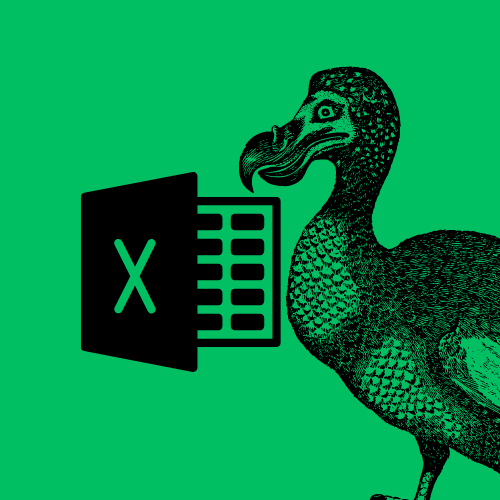
📗 Table of contents
Introduction
Do you need to convert your HDFC Bank statements to Excel and finding good results with existing software?
We can fix this by using PdfDodo to do the conversion for us.
In this post I will go through the steps I to took to convert HDFC bank statements to Excel and help you catch some gotchas.
Generally this will involve a 3 step process:
- Download the bank statement from HDFC website
- Using PdfDodo to extract data to Excel
- Clean the data
I will go over two options to convert the bank statement to Excel format:
- Adobe Acrobat
- Microsoft Excel itself!
Step 1: Download the bank statement from HDFC website
The first step is to get the bank statement from the HDFC website. Generally you just login and download from the “Statements” area.
We then need to analyze the statement so that we know which area will need data cleanup.
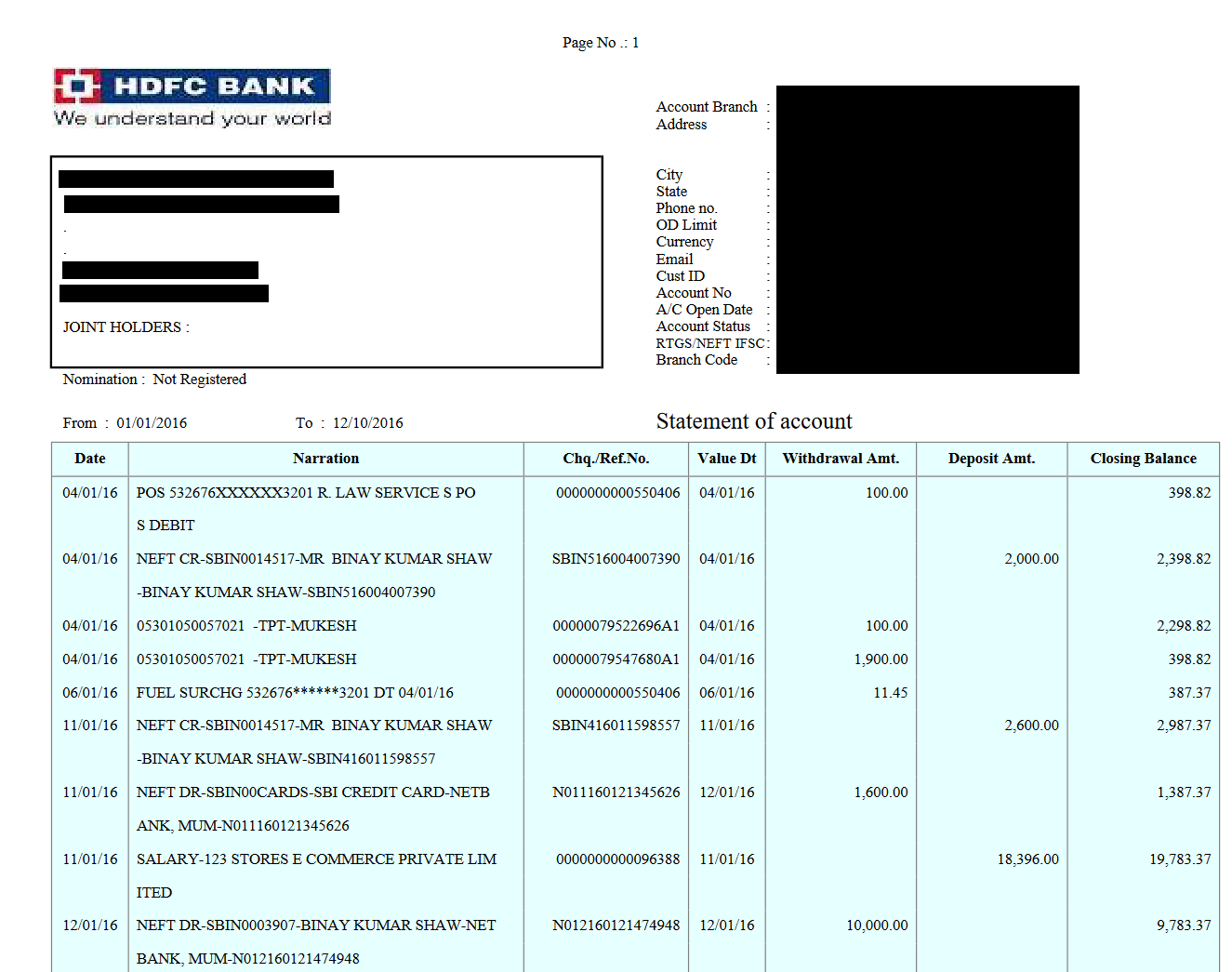
Analysis of the HDFC Bank Statement
- The statement is quite basic compared to larger banks like HSBC
- The transactions table has 7 columns and the headers is a bit different to other banks as well.
- Date, Narration, Chq./Ref.No., Value Dt, Withdrawal Amt., Deposit Amt., Closing Balance
- Dates seem to be formatted with the year. This saves us some time with data cleansing (other banks do not display the year so we have to deduce it ourselves).
- If we need to import this to accounting software such as QuickBooks or Xero, then consider changing the headings.
Step 2: 👉 Using PdfDodo to extract data to Excel
This option is created by yours truly. Just sign up with an account and you try it out for free.
To do start the CSV conversion, we go through the following steps:
- Step 1: Get an account with PdfDodo
- Step 2: Go to the home page and click “Upload Document”
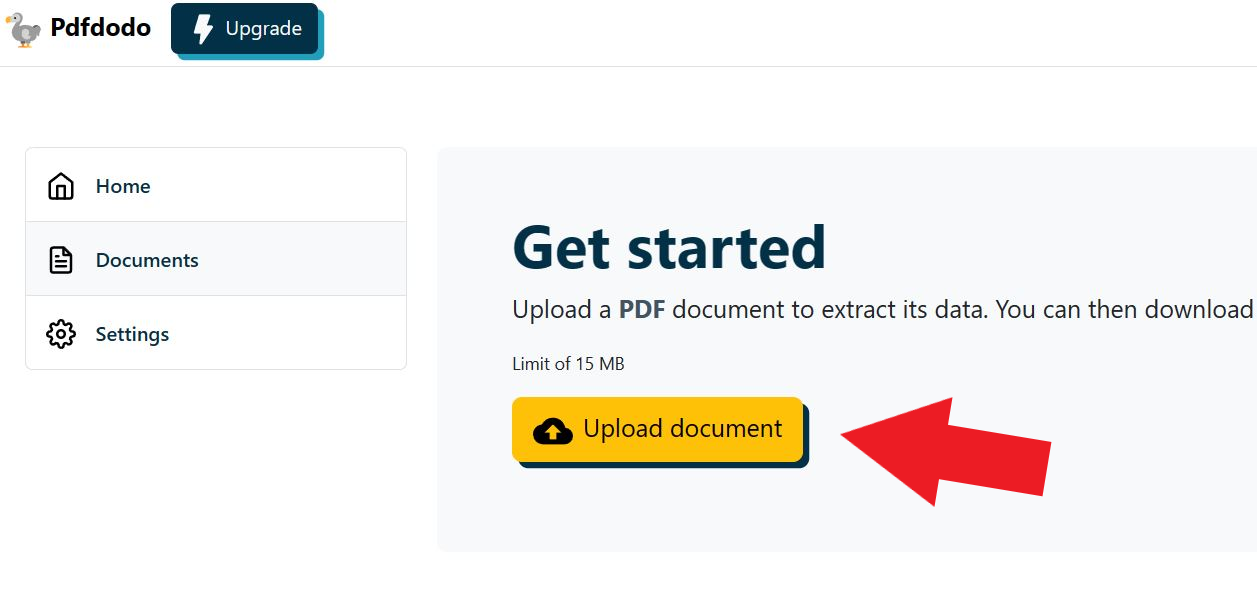
- Step 3: After the document has uploaded - click “Start Analysis”. This will usually take a few seconds.
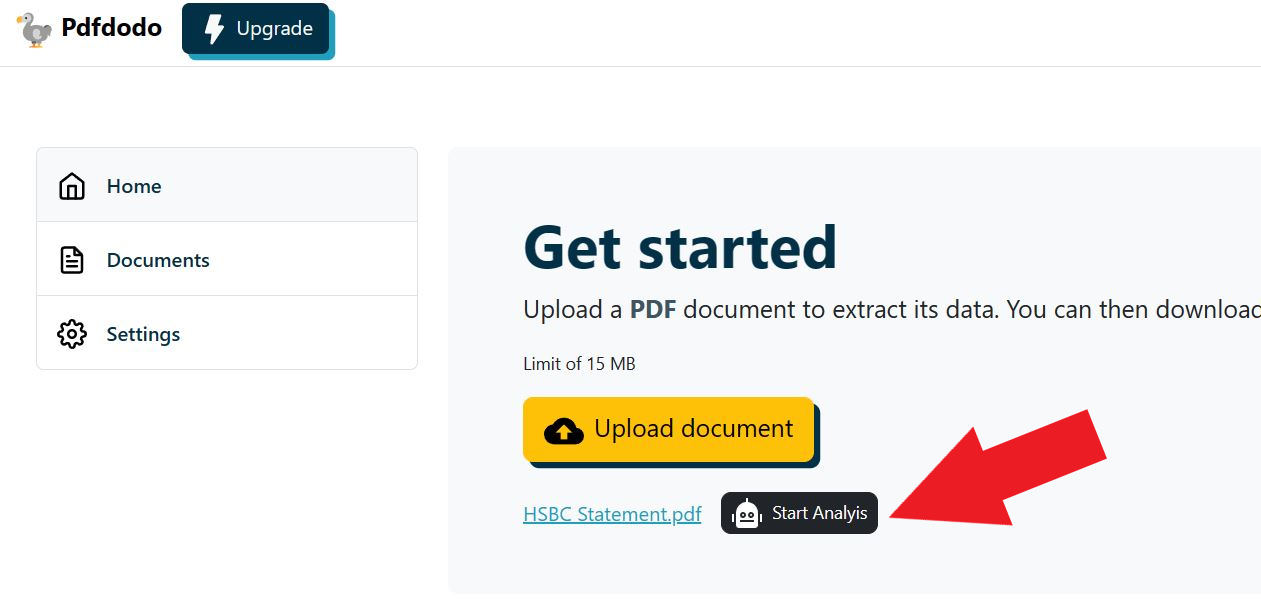
- Step 4: Click on the uploaded document link to see the results.
After PdfDodo has completed analysis, it will list out all the data that it thinks is in a table format.
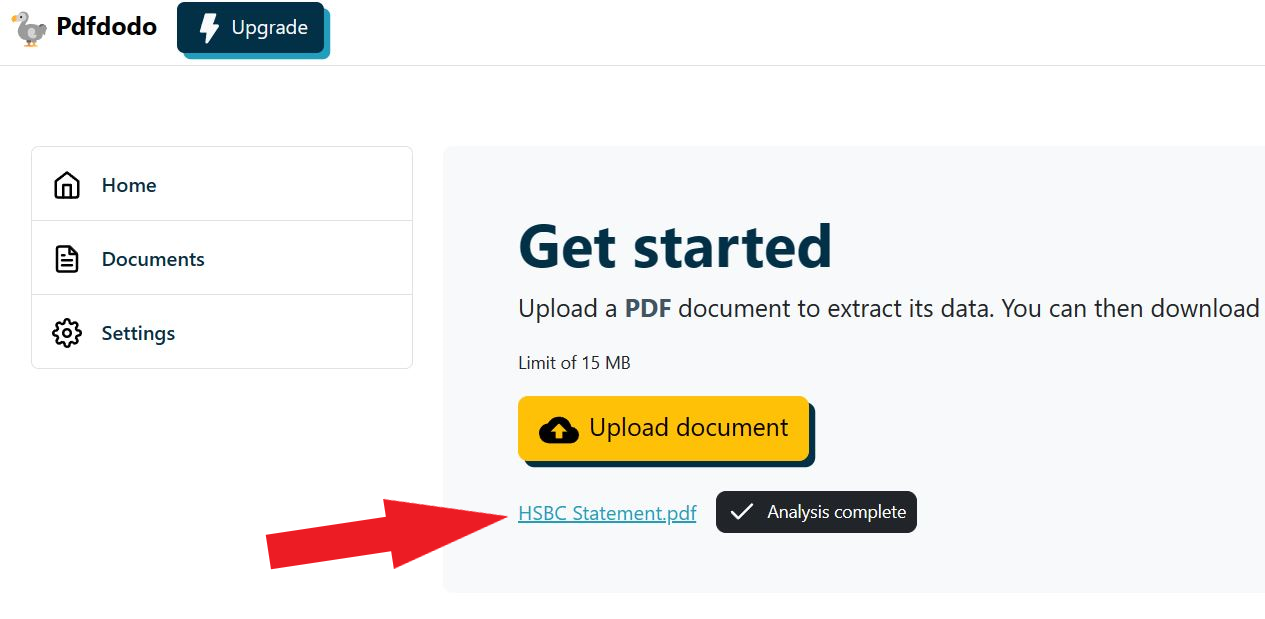
Now we can see our result and download the Excel or CSV file:
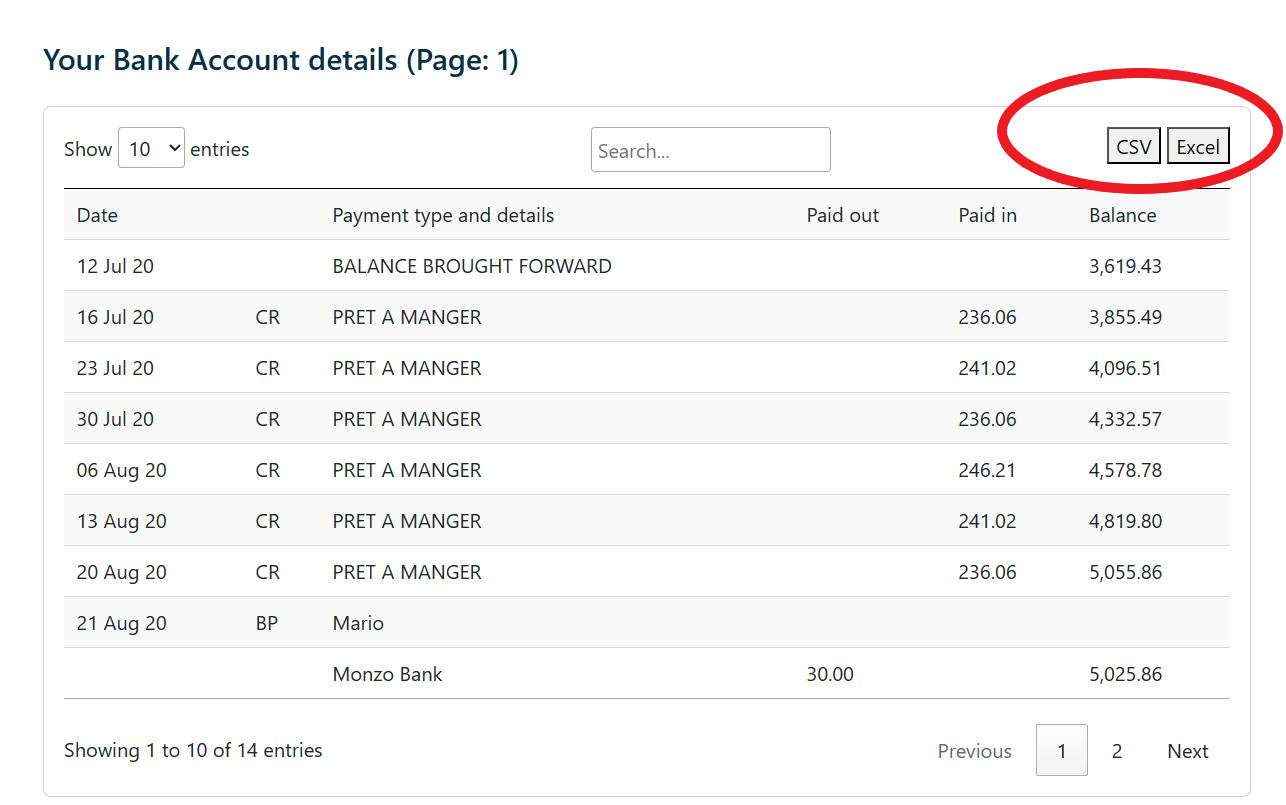
As we can see it correctly matches the columns and rows - even the row with multiple lines!
Benefits
Being a automated process it lends itself with some of the following benefits:
- Works well extracting all the data accurately - very little data cleansing or clean up is required.
- You can use it for scanned PDFs and also text-based PDFs
- Free for limited use and no need to install heavy software.
PdfDodo works with scanned PDFs by using AI and OCR technology
OCR (Optical Character Recognition) is the technology used to convert different types of documents, such as scanned paper documents, PDF files, or images captured by a digital camera, into editable and searchable data.
Through a combination of image preprocessing, feature detection, and machine learning algorithms, OCR systems identify these patterns and match them to corresponding characters in a predefined set.
Option 2: Using Adobe Acrobat
First, you will need to convert your PDF to an Excel file format, as Excel files can easily be converted to CSV.
There are several online tools and software applications that can help you convert a PDF file to Excel. Here are a couple of methods:
- Open the PDF file in Adobe Acrobat (not the free Reader).
- Go to “File” > “Save As Other” > “Spreadsheet” > “Microsoft Excel Workbook.”
- Save the file to your desired location.
Problems with using Adobe Acrobat
- Does not accurately convert data to excel for multiple pages. For example the table of bank transactions can span multiple pages, but it recognises as two or more tables.
- The price can be steep if your only purpose is just to extract data from PDFs
- Not sure where the data is stored and have a hard time contacting support for help.
Option 3: Manual Copy and Paste
- Open your PDF bank statement.
- Highlight the data you want to transfer.
- Copy the data (Ctrl + C or Command + C on macOS).
- Open Excel.
- Paste the data (Ctrl + V or Command + V on macOS).
- Adjust columns and rows accordingly.
- This method can be time-consuming and may not be suitable for lengthy statements.
Problems with manual copy/paste
The most obvious reason for not doing this is that its tedious and tiresome. I would rather be doing something else!
Some other issues that can arise:
- Complex table structures may not retain their format when pasted into Excel.
- Manual copying increases the risk of human error and that you could be accidentally skipping over or miss some data.
Additionally it will not work with scanned PDF bank statements.
Step 3. Clean the data
From my experience with with this HDFC bank statement, there is very little data cleansing involved. You may need to clean up the column headings to match the structure that your accounting software requires.
But apart from that, I did not feel I need to do anything further!
Tips for a Smooth Conversion
- After converting the files, meticulously inspect the CSV to ensure no misalignments or data loss occurred, especially if the original PDF had a complex format.
- Given that bank statements house confidential information, always opt for platforms known for upholding user data privacy when using online tools.
- Retain copies of the untouched bank statements as they might come in handy for verification or if any information is missed during the conversion process.
Final thoughts
Overall the Hdfc Bank statement is not terribly hard to convert to Excel. If you have a lot of free time on your hands and do not want to spend much money then consider PdfDodo or manual copy/paste.
PdfDodo comes with a free plan that allows you a set number of pages per month. Most bank statements will be under this limit.
Another option is to use Adobe Acrobat. This option is quite pricey and I found that the conversion can be quite limiting.
For example it does not go across multiple pages or detect years.
👋 About the Author
G'day! I am Ken Ito a software engineer based in Australia. I have worked as a software engineer for more than 10 years ranging from roles such as tech lead, data analyst to individual contributor. I have experience in creating code (python, javascript) to extract data from PDFs for ETL and financial statement analysis for accounting purposes.
During those years, I have worked for Government departments, companies like NTT (Nippon Telegraph and Telephone), Bupa and not-for-profit organizations.

[RESOLVED] Export NatWest Bank Statement to Excel
Sep 7, 2023Your guide to exporting NatWest Bank statement to Excel or CSV

[HOW TO] Convert Credit Card Statement to Excel
Sep 10, 2023Guide to convert your credit card statement to Excel format.

HOW TO - Convert Amex Statement to Excel
Sep 9, 2023Your guide to converting your Amex Statement to Excel